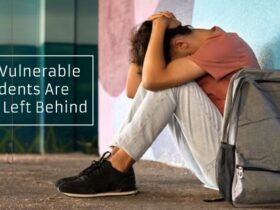Worldwide, the COVID-19 pandemic, which began at the beginning of 2020, caused educational disruptions like never before. As schools shut their entryways and changed to remote learning, many guardians became pushed into the job of at-home educators. Many parents were dissatisfied and began looking for other options due to this massive, unplanned experiment in remote education that revealed numerous flaws in traditional educational practices. The homeschooling movement was one of the biggest beneficiaries of this educational revolution.
In the decade preceding the pandemic, homeschooling had steadily gained popularity, but the shutdowns increased interest and participation. When seen as an exception choice decided chiefly for strict or philosophical reasons, self-teaching pulled in a new rush of families. Its adaptability, customization, and close parent-youngster bonds engaged guardians disappointed with web-based tutoring and dreading proceeded with disturbance and well-being taking a chance from face-to-face guidance.
The U.S. Census Bureau estimates that over 11% of households will be homeschooled by the 2020-2021 school year, more than twice the percentage before the pandemic. Minority bunches like Dark families saw probably the most elevated development rates, driven by worries over disparities and separation in customary schools. Homeschooling had gone mainstream almost overnight.
Why Homeschooling Appealed to Pandemic Parents
Self-teaching offers guardians substantially more curricular adaptability and control than customary public and tuition-based schools. With so much uncertainty and variation in school operations during the pandemic, this individualized approach became very appealing. Guardians could pick instructive assets, set plans, and immediately adjust to changes. Additionally, homeschooling reduces commute times and gives families more time together, appealing to parents concerned about health risks and disrupting daily routines.
For parents frustrated with remote learning, homeschooling provided a way to take direct ownership of their children’s education. With technical issues and minimal interaction, zoom classes and online assignments often needed to be revised. Homeschooling families could ditch this impersonal virtual experience and design learning around their children’s needs and interests. Hands-on projects, community experiences, travel opportunities, and mixed-age grouping became feasible.
Concerns over student mental health and reduced social interaction motivated some parents to homeschool. They felt they could provide a more nurturing environment and safely incorporate social activities. Other worries like learning loss, lack of exercise, over-exposure to screens, and food insecurity could also be more directly addressed at home. For many parents, homeschooling offered a welcome refuge from the chaos of pandemic-era schooling.
The Shift to Hybrid Homeschooling Models
Pure homeschooling with just parents playing the role of teacher quickly proved challenging for many families. Trying to handle a full-time job while teaching kids of multiple ages and grade levels was unrealistic. Even stay-at-home parents needed more time and knowledge to cover every subject adequately. This prompted many homeschoolers to utilize hybrid models incorporating outside resources and specialized services.
Online learning programs, tutors, community classes, small learning pods, and homeschool co-ops exploded in popularity. These offered core academic courses and electives that parents could incorporate into a customized curriculum. Interests like coding, theater, and foreign languages could be nurtured. Families with similar philosophies also banded together to share teaching roles and social outlets. Kids could still have fun with peers while parents handled only certain subjects.
The hybrid homeschool model retained the flexibility and customization families wanted while reducing the isolation and burnout full homeschooling often causes. Kids focused on learning with experts in small groups while parents managed the schedule. Extracurricular activities and social events added back the sports, clubs, and friend interaction kids missed from traditional school. Community resources like museums, libraries, and nature centers also provide “field trip” experiences without exposure risks. This best-of-both strategy will likely remain popular post-pandemic.
The Uncertain Future of Post-Pandemic Homeschooling
Whether these hybrid homeschool models persist in the long term or if most families will revert to traditional public and private schools post-pandemic. Surveys show over 60% of pandemic homeschoolers say they are likely to continue, at least in some capacity. However, uncertainty remains around remote work trends, infection risks, and the reopening plans of local school districts.
Many parents express a newfound appreciation of homeschooling’s benefits and reluctance to relinquish control. Their kids also report enjoying the flexibility and family time. But others feel overwhelmed trying to balance jobs and homeschooling, especially for multiple children across different grades. The social isolation and lack of resources remain challenging for some families. Kids of all ages miss interacting with peers.
Much will depend on how traditional schools adapt to address the concerns that drove families away. Districts are implementing new blended learning models, outdoor classes, mental health services, and hybrid options like part-time enrollment. Some states have passed new support programs and homeschooling-friendly policies. However, frustration with “the system” persists among many parents.
Homeschooling post-pandemic seems likely to remain more popular than pre-2020 levels but below the peak quarantine figures. Many parents will embrace hybrid models that incorporate the best of homeschooling’s flexibility with selective use of classroom resources. Regulations around homeschooling also need to be revised in many regions. The desire for educational alternatives catalyzed by the pandemic has produced permanent shifts favoring options like homeschooling. But most families seem eager to incorporate at least some traditional classroom time when safe conditions allow. The future of K-12 education will likely be more personalized, flexible, and parent-driven than before. But mainstream homeschooling exists on a spectrum and can look very different from family to family.
Conclusion
The COVID-19 pandemic led to a massive surge in homeschooling, with many parents embracing its flexibility and customization. Hybrid models incorporating outside resources while maintaining a personalized curriculum have become especially popular. While some families will likely return to traditional schooling post-pandemic, homeschooling seems poised to remain more common than pre-2020 levels. Many parents have discovered benefits like stronger family bonds, lower stress, and more engaged learning. Homeschooling’s future is likely a blend of at-home instruction and selective use of classroom time.
FAQs:
Q: Why did homeschooling grow so much during the pandemic?
School closures and frustrations with remote learning made the flexibility of homeschooling very appealing. Health concerns and disrupted routines also motivated families.
Q: What are hybrid homeschooling models?
Hybrid homeschooling incorporates outside resources like online classes, tutors, and community activities while parents manage the curriculum. This reduces isolation and burnout risks.
Q: Will most new homeschoolers continue post-pandemic?
Surveys show over 60% plan to continue at least part-time. But uncertainty remains around schools reopening and job situations. Homeschooling will likely be more common than pre-pandemic but below peak quarantine levels.














Welcome To Biz Times Now
Welcome to Biz Times Now, the leading business magazine dedicated to providing invaluable insights and strategic guidance to top-level executives and managing personnel.